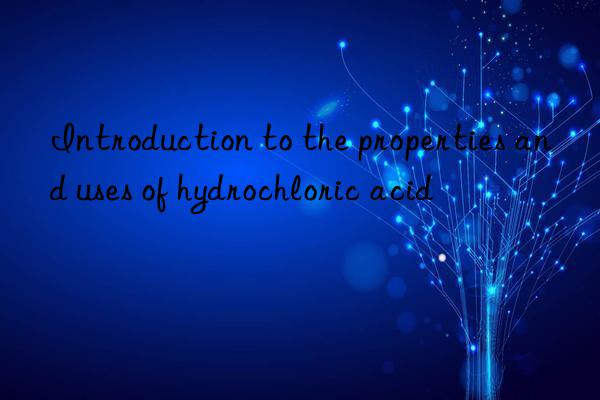
[Alias] Hydrochloric acid, brine.
[Molecular formula]HCI
[Property] Hydrochloric acid is a solution formed by dissolving hydrogen chloride gas in water. Pure hydrochloric acid is a colorless liquid with hydrogen chloride Exciting smell. Industrial hydrochloric acid is slightly yellow due to impurities such as iron and chlorine. Commercial concentrated hydrochloric acid is an aqueous solution of hydrogen chloride with a concentration of about 31%, which is about 19 degrees Baume, and the relative density is 1.154. It is an inorganic strong acid with a sour taste. Very easily soluble in water, also easily soluble in ethanol and ether. It can react chemically with many metals, metal oxides, alkalis and salts. Concentrated hydrochloric acid (36%) fumes in the air, and white clouds will form when exposed to ammonia vapor. Distill dilute hydrochloric acid or concentrated hydrochloric acid solution to obtain an azeotrope with a constant boiling point of 108.58°C (1.01325×105Pa) containing 20.222% hydrogen chloride. Analytical chemistry is often used as a standard acid solution.
[Application] Hydrochloric acid is an important chemical raw material, widely used in fine chemical industry, light industry textile, dyestuff, medicine, food, leather , sugar and other fields. It is the raw material for producing ammonium chloride, calcium chloride, barium chloride, zinc chloride, ferric chloride and other chlorides. In the printing and dyeing industry, it is used as pickling agent for cotton cloth after bleaching, chromogenic diazotization agent for dyeing Nafto dyes, preparation of aniline salt dyes, and as a stripping agent for inscription-plated flower tubes, etc. Organic chemical industry is used in the manufacture of ethyl chloride, methyl chloride, dichloropropane, polyvinyl chloride, etc. In the food industry, it is used to refine sodium glutamate, starch sugar, sucrose, etc. The leather industry is used for tanning. It is also used in the manufacture of activated carbon, white carbon black, as an extraction agent and regeneration of ion exchange resins, and in surface treatment of metals.
[Brief recipe]
①There are mainly synthesis method and by-product method. The synthesis method is to electrolyze the salt solution to obtain chlorine gas and hydrogen gas. Then the chlorine gas is burned in the hydrogen gas to generate hydrogen chloride gas, which is cooled and absorbed by water to obtain hydrochloric acid. The reaction formula is as follows:
Cl2 + H2 — 2HCI (hydrochloric acid)
Unconverted chlorine gas can be absorbed by lye to generate sodium hypochlorite
② Hydrochloric acid can also be prepared by a simple method by using brine blocks (commonly known as salt chimneys) as raw materials. The chimney block contains a large amount of magnesium chloride hexahydrate (MgCI2·6H2O), which can undergo hydrolysis under high temperature heating to generate hydrogen chloride gas, magnesium chloride and water vapor. Hydrochloric acid is produced after hydrogen chloride gas is absorbed in water.
[Safety and Protection]Hydrochloric acid is a secondary inorganic acid corrosive substance, hazard code number: 93001. It is highly corrosive, can corrode metals, and has a corrosive effect on animal and plant fibers and human skin. For a small amount, it can be packed in plastic drums (or ceramic altars), with a net weight of 25kg per drum. 0.5-5kg products can be packaged in glass bottles, which should be sealed. A large amount of hydrochloric acid needs to be stored in storage tanks and transported by bad trucks and tank ships. Containers such as storage tanks are made of steel lined with acid-resistant rubber or polyvinyl chloride hard board. There should be a "corrosive substance" mark on the package. It cannot be mixed with sulfuric acid and nitric acid, nor can it be stored and transported together with alkalis, oxidants, metal powders and flammable materials in contact with water. In case of fire, water, yellow sand and carbon dioxide fire extinguishers can be used to extinguish the fire.
When the skin or eyes touch hydrochloric acid, rinse it with plenty of water immediately, and if it is serious, rinse it with 2%~5% baking soda aqueous solution, and then rinse it with water .

 微信扫一扫打赏
微信扫一扫打赏

